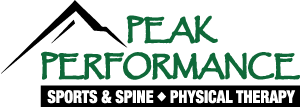THERAPY LIGHTS DO THEY WORK OR ARE THEY ALL HYPE?
 The winter months can be dreary for folks who live in northern regions. The days are shorter and the sky is often obscured by clouds. This bleak weather can lead to seasonal affective disorder, or SAD. Depression, moodiness, and lower energy typically affect people with SAD more during the fall and winter months.
The winter months can be dreary for folks who live in northern regions. The days are shorter and the sky is often obscured by clouds. This bleak weather can lead to seasonal affective disorder, or SAD. Depression, moodiness, and lower energy typically affect people with SAD more during the fall and winter months.
The disorder has several different causes, but a primary one is a lack of sunlight, which can have an impact on your body’s internal clock. The winter climate can also reduce your serotonin levels, which influence your mood. Low serotonin can bring about feelings of depression.
To address this problem, manufacturers developed light therapy devices. Therapy lights, or “happy lights,” are bright lamps that can sit on your desk or end table. They simulate natural sunlight and are marketed as mood boosters that treat symptoms of SAD. But do these therapy lights actually work or are they just placebos?
The answer is both. There are a lot of therapy lights on the market, but they’re not all equally effective. The difference is their output. While most lights attempt to simulate sunlight, some devices have weaker output, which means your body and brain won’t respond the same way they do when in natural sunlight.
For instance, some lights are marketed as having “5,000 lux” or “10,000 lux.” There is a big difference between the two. Normal daylight (not direct sunlight), has the equivalent of 10,000– 25,000 lux. Direct sunlight can have anywhere from 30,000–100,000 lux. Average office lighting puts out less than 500 lux.
In order to be effective, you need a lamp with at least 10,000 lux. After about 30–45 minutes of use, you should notice a boost in mood and energy. While therapy lights are safe and come with few side effects, they are not suited for extended use. Many lights come with a warning not to use them for more than an hour at a time. Using them for longer than an hour can cause eye strain, headaches, and irritability.
Therapy lights are not a cure-all. They can help, but they’re a short-term solution. If you feel the effects of SAD or experience depression, consult with a health professional to determine what solution is right for you.
